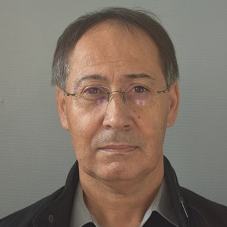Neuroimmunology
A special issue of International Journal of Molecular Sciences (ISSN 1422-0067). This special issue belongs to the section "Molecular Neurobiology".
Deadline for manuscript submissions: closed (30 June 2020) | Viewed by 43554
Special Issue Editors
Interests: proteomics; neuroimmunology; oncoimmunology; dot blot hybridization; immunology; cancer research; elisa; innate immunity; MALDI-TOF MS; amino acids; proteins; enzymes; analytical chemistry
2. Stem-Cell and Brain Research Institute, 18 Avenue de Doyen Lépine, F-69500 Bron, France
3. Lyon-Est School of Medicine, University Claude Bernard Lyon 1, 43 Bd du 11 Novembre 1918, F-69100 Villeurbanne, France
Interests: multiple sclerosis pathophysiology; CNS-targeted autoimmunity; neuroinflammation; computational data mining; systems biology
Special Issues, Collections and Topics in MDPI journals
Special Issue Information
Dear Colleagues,
Neuroimmunology represents the field that integrates cross-talk between the immune and nervous systems, but also expression of immune factors in the brain as well as neuroendocrine factors in the immune system. Interactions between the two systems during neurodevelopment, brain homeostasis and brain pathologies are the main interests for neuroimmunologists. The understanding of the role of immune cell infiltration as well as immune factor expression by neural and neuronal cells constitutes the basis of research into brain diseases in terms of their etiology, spreading, cognitive consequences and the possibility of pharmaceutical treatment. Among the major cells implicated in the neuroimmune response, microglia and astrocytes constitute the pillar of the physiological functioning of the nervous system. These cells acts as the link and the sensors of the cognitive or brain pathogenic stresses. Environmental stressors are the major inducers of neuroinflammation that lead to brain disorders. Taken together, this Special Issue is dedicated to the recent research progress in neuroimmunology. The goal is to provide an in-depth understanding of the underlying central impact of the neuroimmune response in brain diseases, and to exploit such knowledge for future therapies, taking into account the immune part of the brain response.
Prof. Dr. Michel Salzet
Prof. Dr. Serge Nataf
Guest Editors
Manuscript Submission Information
Manuscripts should be submitted online at www.mdpi.com by registering and logging in to this website. Once you are registered, click here to go to the submission form. Manuscripts can be submitted until the deadline. All submissions that pass pre-check are peer-reviewed. Accepted papers will be published continuously in the journal (as soon as accepted) and will be listed together on the special issue website. Research articles, review articles as well as short communications are invited. For planned papers, a title and short abstract (about 100 words) can be sent to the Editorial Office for announcement on this website.
Submitted manuscripts should not have been published previously, nor be under consideration for publication elsewhere (except conference proceedings papers). All manuscripts are thoroughly refereed through a single-blind peer-review process. A guide for authors and other relevant information for submission of manuscripts is available on the Instructions for Authors page. International Journal of Molecular Sciences is an international peer-reviewed open access semimonthly journal published by MDPI.
Please visit the Instructions for Authors page before submitting a manuscript. There is an Article Processing Charge (APC) for publication in this open access journal. For details about the APC please see here. Submitted papers should be well formatted and use good English. Authors may use MDPI's English editing service prior to publication or during author revisions.







